 W
WReligious pluralism is an attitude or policy regarding the diversity of religious belief systems co-existing in society. It can indicate one or more of the following:Recognizing and tolerating the religious diversity of a society or country, promoting freedom of religion, and defining secularism as neutrality on issues of religion as opposed to opposition of religion in the public square, and promoting friendly separation of religion and state as opposed to hostile separation or Antitheism. As the name of the worldview according to which one's own religion is not held to be the sole and exclusive source of truth, and thus the acknowledgement that at least some truths and true values exist in other religions. As acceptance of the concept that two or more religions with mutually exclusive truth claims are equally valid, this may be considered a form of either toleration or moral relativism. The understanding that the exclusive claims of different religions turn out, upon closer examination, to be variations of universal truths that have been taught since time immemorial. This is called Perennialism or Traditionalism. Sometimes as a synonym for ecumenism, i.e., the promotion of some level of unity, co-operation, and improved understanding between different religions or different denominations within a single religion. As a term for the condition of harmonious co-existence between adherents of different religions or religious denominations. As a social norm and not merely a synonym for religious diversity.
 W
WThe 1888–1893 Uprisings of Hazaras occurred in the aftermath of the Second Anglo-Afghan War, when the Afghan Emirate signed the Treaty of Gandamak. Afghan King Abdur Rahman Khan set out to bring the Turkistan, Hazarajat and Kafiristan regions under his control. He launched several campaigns in the Hazarajat due to resistance from the Hazaras, and he conducted a widespread campaign on its population.
 W
WThe allegory of the long spoons is a parable that shows the difference between heaven and hell by means of people forced to eat with long spoons. It is attributed to Rabbi Haim of Romshishok, as well as other sources.
 W
WSathya Sai Baba was an Indian guru and philanthropist. At the age of fourteen he claimed that he was the reincarnation of Shirdi Sai Baba, and left his home in order to serve the society and be an example to his followers.
 W
WMahavatar Babaji is the name given to an Indian yogi by Yogiraj Lahiri Mahasaya, and several of his disciples, Sri Yukteswar Giri, Baba Nasib Singh Ji, Ram Gopal Muzumdar, Swami Kebalananda, and Swami Pranabananda Giri who reported meeting him between 1861 and 1935. Some of these meetings were described by Paramahansa Yogananda in his 1946 book Autobiography of a Yogi, including a report of Yogananda's own meeting with the yogi. Another account was given by Sri Yukteswar Giri in his 1894 book The Holy Science. According to Sri M's autobiography, Babaji was Lord Shiva. In the second to last chapter of his book, he mentions Babaji changing his form to that of Lord Shiva. All of these accounts, along with additional reported meetings, are described in various biographies. According to Yogananda's autobiography, Babaji has resided for at least hundreds of years in the remote Himalayan regions of India, seen in person by only a small number of disciples and others.
 W
WBaba Lokenath Brahmachari was a Bengali spiritual master and yogi, considered to be one of the most influential gurus of oriental philosophy.
 W
WThe Center for Jewish–Christian Understanding and Cooperation or CJCUC is an educational institution at which Christians who tour Israel can study the Hebrew Bible with Orthodox rabbis and learn about the Hebraic roots of Christianity. The center was established in Efrat in 2008 by Rabbi Dr. Shlomo Riskin, who has been described as "the most prominent rabbinic spokesperson to Christian Zionists". CJCUC partners with major Christian interfaith organizations such as Christians United for Israel and the International Christian Embassy Jerusalem. Since Riskin's retirement as president of Ohr Torah Stone in 2018, the overseeing of all CJCUC activities has been turned over to David Nekrutman who has served as the center's chief director since its inception.
 W
WThe Dīn-i-Ilāhī, known during its time as Tawḥīd-i-Ilāhī or Divine Faith, was a syncretic religion or spiritual leadership program propounded by the Mughal emperor Akbar in 1582, intending to merge some of the elements of the religions of his empire, and thereby reconcile the differences that divided his subjects. The elements were primarily drawn from Islam, Hinduism, and Zoroastrianism, but some others were also taken from Christianity, Jainism, and Buddhism.
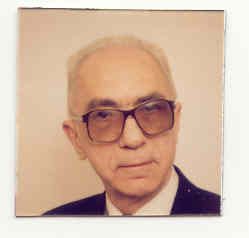 W
WJacques Dupuis was a Belgian Jesuit priest and theologian. He spent several decades in India and beginning in 1984 taught at the Pontifical Gregorian University in Rome.
 W
WEcumenism, also spelled oecumenism, is the concept and principle in which Christians who belong to different Christian denominations work together to develop closer relationships among their churches and promote Christian unity. The adjective ecumenical is thus applied to any interdenominational initiative that encourages greater cooperation between Christians and their churches.
 W
WSri Yukteswar Giri is the monastic name of Priya Nath Karar, an Indian monk and yogi, and the guru of Paramahansa Yogananda and Swami Satyananda Giri. Born in Serampore, West Bengal, Sri Yukteswar was a Kriya yogi, a Jyotisha, a scholar of the Bhagavad Gita and the Upanishads, an educator, author, and astronomer. He was a disciple of Lahiri Mahasaya of Varanasi and a member of the Giri branch of the Swami order. As a guru, he had two ashrams, one in Serampore and another in Puri, Odisha, between which he alternated his residence throughout the year as he trained disciples.
 W
WGod Makes the Rivers to Flow is an anthology of spiritual texts for use in meditation, assembled by Eknath Easwaran. Condensed versions have been published under the titles Timeless Wisdom (book) and Sacred Literature of the World. First published as a book in the US in 1982, progressively enlarged or revised versions of God Makes the Rivers to Flow were also issued in the US in 1991, 2003, and 2009. English editions have been published in India, and a French edition has been published. The book has been reviewed in newspapers, magazines, professional journals, and websites, and utilized in research studies and education.
 W
WJohn Harwood Hick was a philosopher of religion and theologian born in England who taught in the United States for the larger part of his career. In philosophical theology, he made contributions in the areas of theodicy, eschatology, and Christology, and in the philosophy of religion he contributed to the areas of epistemology of religion and religious pluralism.
 W
WThe history of religious pluralism is the fruit of a long development that reaches from antiquity to contemporary trends in postmodernity.
 W
WThe Holy Science is a book written by Swami Sri Yukteswar Giri in 1894 under the title Kaivalya Darsanam. Sri Yukteswar states that he wrote The Holy Science at the request of Mahavatar Babaji. The book compares parallel passages from the Bible and Upanishads in order to show the unity of all religions.
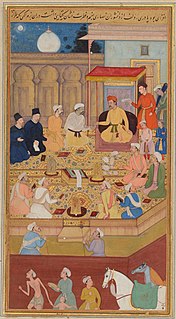 W
WThe Ibādat Khāna was a meeting house built in 1575 CE by the Mughal Emperor Akbar at Fatehpur Sikri to gather spiritual leaders of different religious grounds so as to conduct a discussion on the teachings of the respective religious leaders.
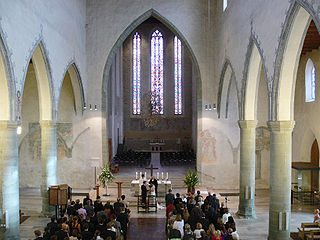 W
WAn interfaith marriage, also known as an interreligious marriage, is defined by Christian denominations as a marriage between a Christian and a non-Christian, whereas an interdenominational marriage is between members of two different Christian denominations, such as a Lutheran Christian wedding a Catholic Christian, for example.
 W
WInterpretatio graeca or "interpretation by means of Greek [models]" is a discourse used to interpret or attempt to understand the mythology and religion of other cultures; a comparative methodology using ancient Greek religious concepts and practices, deities, and myths, equivalencies, and shared characteristics.
 W
WThe Center for Muslim-Jewish Engagement (CMJE) was a faith-based coalition whose stated mission was to "promote dialogue, understanding and grassroots, congregational and academic partnerships among the oldest and the newest of the Abrahamic faiths while generating a contemporary understanding in this understudied area and creating new tools for interfaith communities locally, nationally and beyond." The center closed in January 2012.
 W
WPandit Niraj Jain was a scholar of Jainism, archaeologist, poet and speaker. His contributions to Jain studies span nearly 60 years. He was also an expert on Urdu poetry, which is unusual for a Jain scholar. He was associated with several organisations. He also lectured on the Ramayana He was a proponent of preserving historical nature of ancient temples. He had travelled and lectured widely in India and overseas .
 W
WShyama Charan Lahiri, best known as Lahiri Mahasaya, was an Indian yogi, guru and a disciple of the Kriya Yoga master Mahavatar Babaji. In 1861, he was chosen by his guru to revive the yogic science of Kriya Yoga to the public after centuries of its guarding by masters. He was unusual among Indian holy people in that he was a householder: marrying, raising a family, and working as a government accountant, he lived with his family in Varanasi rather than in a temple or monastery. Throughout his life, he spread Kriya naturally and rarely sponsored any organizations; nonetheless, his pious living attracted followers, and he became the guru of many advanced Kriya disciples, such as Panchanan Bhattacharya and Swami Sri Yukteswar Giri. For his exceptional lifestyle as an "Ideal yogi-householder", he became a spiritually inspirational figure and achieved a substantial reputation among 19th century Hindu religionists.
 W
WMajma-ul-Bahrain is a book on comparative religion authored by Mughal Shahzada Dara Shukoh as a short treatise in Persian, c. 1655. It was devoted to a revelation of the mystical and pluralistic affinities between Sufic and Vedantic speculation. It was one of the earliest works to explore both the diversity of religions and a unity of Islam and Hinduism and other religions. Its Hindi version is called Samudra Sangam Grantha and an Urdu translation titled Nūr-i-Ain was lithographed in 1872.
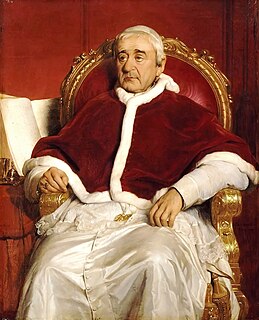 W
WMirari vos, sometimes referred to as Mirari vos arbitramur, is the first encyclical of Pope Gregory XVI and was issued in August 1832. Addressed "To All Patriarchs, Primates, Archbishops, and Bishops of the Catholic World", it is general in scope.
 W
WMulticonfessional countries have a power sharing arrangement between people of different faiths, usually three or more significant confessional groups within the same jurisdiction. Examples of modern countries deemed multiconfessional are Lebanon and Bosnia and Herzegovina.
 W
WA multifaith space or multifaith prayer room is a quiet location set aside in a busy public place where people of differing religious beliefs, or none at all, are able to spend time in contemplation or prayer. Many of these spaces are "small, clean and largely unadorned areas", which can be adapted and serve for any religious or spiritual practice. Occasionally, persons of different faiths may come together in such spaces within the context of multifaith worship services, nevertheless such places are often visited by people of the Islamic faith.
 W
WMultiple religious belonging, also known as double belonging, refers to the idea that individuals can belong to more than one religious tradition. While this is often seen as a common reality in regions such as Asia with its many religions, religious scholars have begun to discuss multiple religion belonging with respect to religious traditions such as Judaism, Christianity, and Islam.
 W
WJohn Courtney Murray was an American Jesuit priest and theologian, who was especially known for his efforts to reconcile Catholicism and religious pluralism, particularly focusing on the relationship between religious freedom and the institutions of a democratically structured modern state.
 W
WChöje Lama Gelongma Palmo, ; * 1970 Sabine Januschke in Vienna is one of the very few female Lamas of Buddhism and the first ever non Asian, female Chöje Lama.
 W
WPalpung Europe, fully Palpung Yeshe Chökhor Ling Europe is the European Seat of the Palpung Congregation of H. H. Chamgon Kenting Tai Situ Rinpoche which was established by and is under the direction of Chöje Lama Palmo. The City Institute is based in the Viennese Forest in Purkersdorf, the Rural Institute lies in the Bohemian Forest in the border triangle of Austria, Germany and Czech Republique, in Langschlag.
 W
WPeace Mala, is a British Registered Charity based in Morriston in Swansea, Wales dedicated to fostering inter-cultural and inter-faith tolerance through the manufacture, distribution and wearing of a symbolic mala (bracelet) whose beads represent various faiths.
 W
WThe Perennial Philosophy is a comparative study of mysticism by the British writer and novelist Aldous Huxley. Its title derives from the theological tradition of perennial philosophy.
 W
WThe Hazara community in Quetta, in Pakistan, has been the target of persecution and violence. Terrorist organisations like Lashkar-e-Jhangvi have often accepted responsibility for conducting attacks on Hazaras in Pakistan.
 W
WThe 2004 Quetta Ashura massacre is the sectarian terrorist attack on Tuesday 2 March 2004 during an Ashura procession in the southwestern city of Quetta, in the Balochistan province of Pakistan. At least 42 persons were killed and more than 100 wounded in the attack. The attack took place in Liaqat Bazaar Quetta, almost all of the victims were from the Hazara ethnic minority of Balochistan. The incident occurred just after the incident of the Karbala Ashura bombings in Iraq.
 W
WReligion in ancient Rome includes the ancestral ethnic religion of the city of Rome that the Romans used to define themselves as a people, as well as the religious practices of peoples brought under Roman rule, in so far as they became widely followed in Rome and Italy. The Romans thought of themselves as highly religious, and attributed their success as a world power to their collective piety (pietas) in maintaining good relations with the gods. The Romans are known for the great number of deities they honored, a capacity that earned the mockery of early Christian polemicists.
 W
WThe Mughal Empire, which was established following the defeat of Ibrahim Lodi in 1526 at the First Battle of Panipat and consolidated over the time with expansionist policy of its rulers, derived its strength from its nobility which was hypergamous and included the Turks, Afghans, Uzbegs and even Hindu Rajputs and Khatris. The Mughal rulers were successful in reigning over a long period of time over the vast area of the subcontinent because of their administrative and religious policy, which provided for the cohesion among various sects and creeds. Both Babur and Humayun were busy throughout their regnal years in wars and conquest apart from suppression of revolt and couldn't devote enough time for the administration and policies formulation. It was Akbar during whose reign the religious policy of the Mughals were formulated. The later Mughals followed Akbar but violation of his policy went unbated many a times leading to the complete downfall of the theory of "divine religion" propounded by Akbar during the regnal years of Aurangzeb.
 W
WReligious symbolism in the United States military includes the use of religious symbols for military chaplain insignia, uniforms, emblems, flags, and chapels; symbolic gestures, actions, and words used in military rituals and ceremonies; and religious symbols or designations used in areas such as headstones and markers in national cemeteries, and military ID tags.
 W
WReligious uniformity occurs when government is used to promote one state religion, denomination, or philosophy to the exclusion of all other religious beliefs.
 W
WThe Rimé movement is a movement or tendency in Tibetan Buddhism which promotes non-sectarianism and universalism. Teachers from all branches of Tibetan Buddhism - Sakya, Kagyu, Nyingma and Gelug, as well as Bon - have been involved in the promoting Rimé ideals.
 W
WSwami Satyabhakta was an Indian scholar, philosopher, reformer and the founder of Satya Samaj.
 W
WThe Sea of Faith Network (SoF) is an organisation with the stated aim to explore and promote religious faith as a human creation.
 W
WAtaullah Siddiqui was a Muslim scholar and academic who did much to promote interfaith relations.
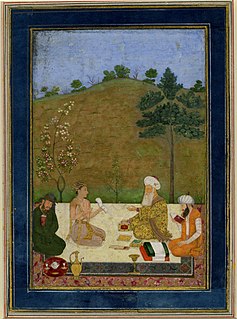 W
WThe Sirr-i-Akbar is a version of the Upanishads authored by the Mughal-Shahzada, Dara Shukoh, translated from Sanskrit into Persian, c. 1657. After years of Sufi learning, Dara Shukoh sought to uncover a common mystical language between Islam and Hinduism, boldly stating that the Kitab al-Maknun, or "Hidden Book", mentioned in the Qur'an is none other than the Upanishads.
 W
WThe Teachings of the Mystics is a 1960 work of popular philosophy by the Princeton philosopher Walter T. Stace that lays out his philosophy of mysticism and compiles writings on mystical experience from across religious traditions. The book’s comprehensive selections met with broadly positive responses.
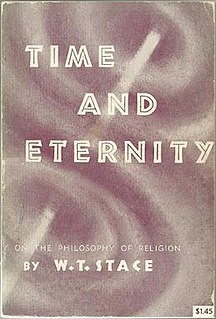 W
WTime and Eternity - An Essay on the Philosophy of Religion is a philosophy book written by Walter Terence Stace. At the time of writing, Stace was a professor of philosophy at Princeton University, where he had worked since 1932 after a 22-year career in the Ceylon Civil Service. Time and Eternity was one of his first books about the philosophy of religion and mysticism, after writing throughout most of the 1930s and 1940s that was influenced by phenomenalist philosophy.
 W
WUnitarian Universalism (UU) is a liberal religion characterized by a "free and responsible search for truth and meaning". Unitarian Universalists assert no creed, but instead are unified by their shared search for spiritual growth, guided by a dynamic, "living tradition". Currently, these traditions are summarized by the Six Sources and Seven Principles of Unitarian Universalism, documents recognized by all congregations who choose to be a part of the Unitarian Universalist Association. These documents are 'living', meaning always open for revisiting and reworking. Unitarian Universalist (U.U.) congregations include many atheists, agnostics, and theists within their membership—and there are U.U. churches, fellowships, congregations, and societies around the world. The roots of Unitarian Universalism lie in liberal Christianity, specifically unitarianism and universalism. Unitarian Universalists state that from these traditions comes a deep regard for intellectual freedom and inclusive love. Congregations and members seek inspiration and derive insight from all major world religions.